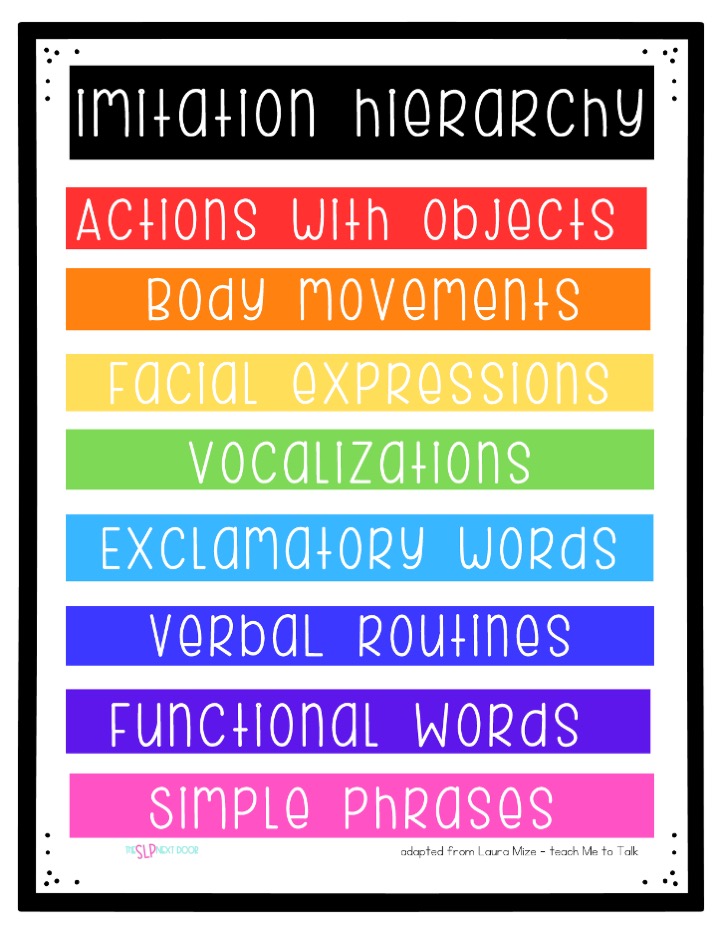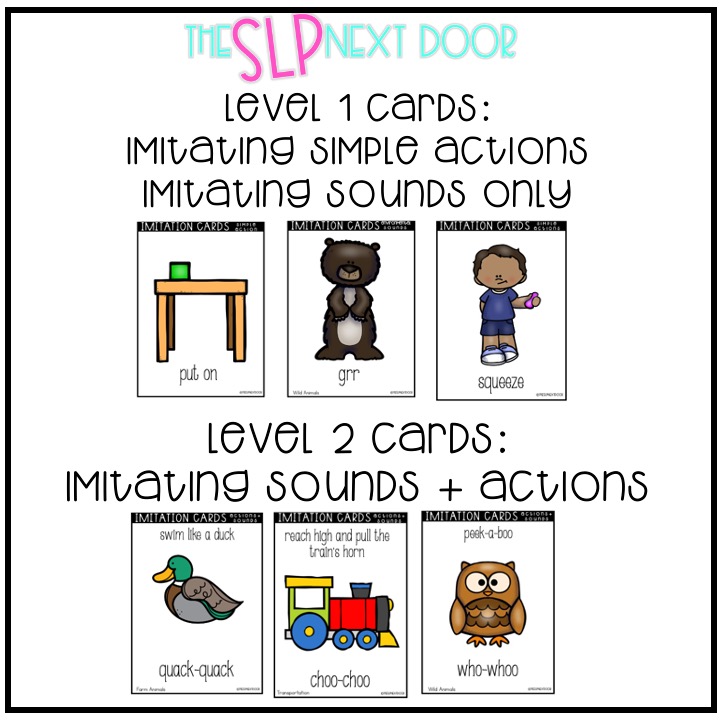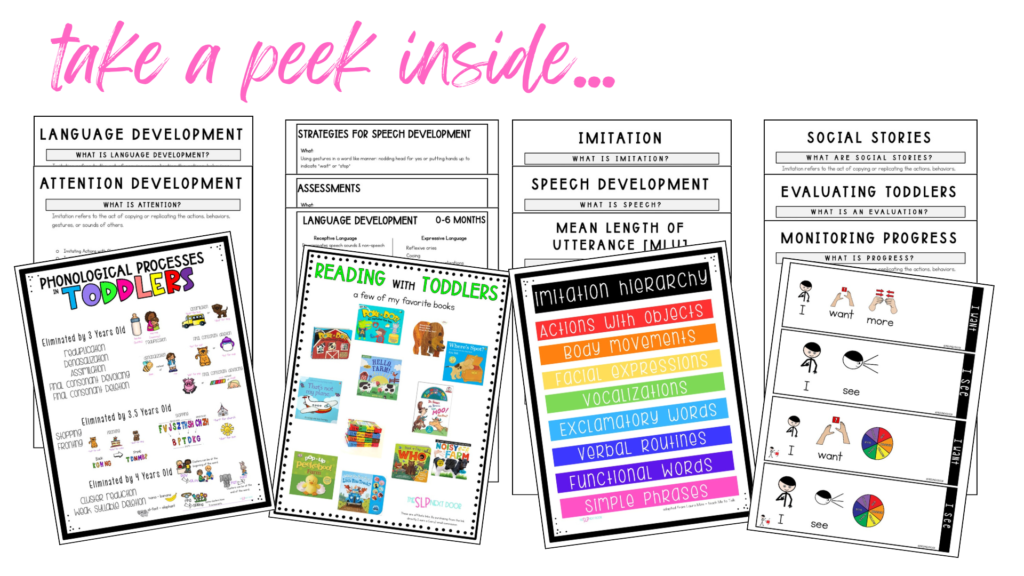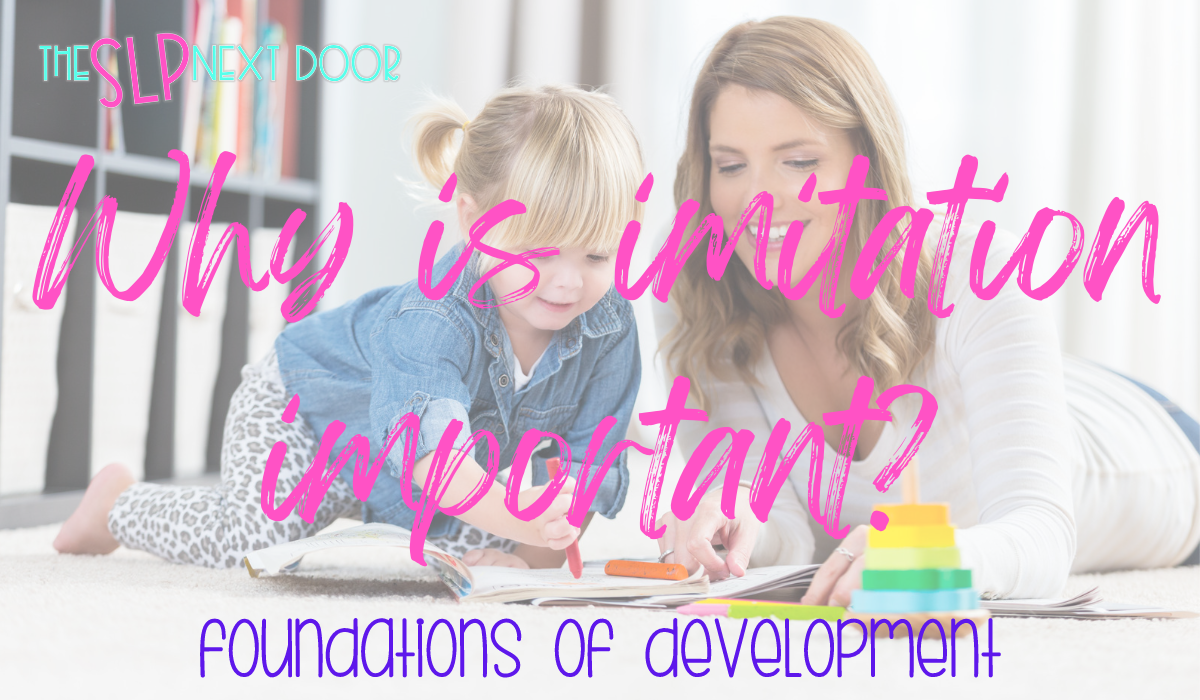Can we take a moment to appreciate the incredible superpower that little ones possess? I’m talking about the foundational skills of imitation! Toddlers have this incredible ability to absorb everything around them and make it a part of their own world through imitation. Let’s dive into why imitating is such a big deal in the journey of early childhood development.
Why is imitation important?
Imitation is copying the actions, behaviors, gestures, or sounds of others. Learning to imitate is a fundamental learning process for children. Imitation occurs in various contexts, including social interactions, language acquisition, and motor skills. Imitation starts early; infants imitate facial expressions and sounds they observe from their caregivers.
Why is imitation important for language development?
Toddlers acquire new skills through imitation. They imitate actions, sounds, words, speech, and even social skills. Consider your sessions with speech therapy for toddlers; what are we asking them to do initially? Imitate us! We demonstrate actions, words, or processes and want them to mirror our behaviors.
Imitation develops sequentially, starting with object imitation and ending with copying words. This is why toddlers use gestures (pointing, waving) or signs before spoken words.
We know that imitation encourages language development. But did you know imitation also encourages social interactions? Young children often imitate the actions of their caregivers, siblings, or other children. They learn turn-taking, cooperation, and empathy!

Imitating Actions with Objects & Body Movements
Imitating actions refers to the process of observing and copying the actions, movements, or behaviors of others. When toddlers imitate actions, they observe the visual cues, process the auditory feedback, and feel the tactile sensations associated with the action. That’s a lot of brain power, right?
Before children imitate body movements, they will imitate actions with objects. This often occurs when children have observed you playing with their toys, i.e., putting puzzles together, rolling a ball, or dropping items into a container.
Additionally, children will begin to imitate the movements of others, such as waving, stomping feet, clapping, and playing peek-a-boo. Keep in mind that body movements can be “big,” such as waving arms and stomping feet, or “small,” like wiggling fingers or eye blinks.
Imitating Sounds, Words, and Phrases
Imitating sounds refers to listening, observing, and copying various sounds heard in an environment. Babies and toddlers imitate the sounds their caregivers, siblings, or other children make. Think: animal sounds, environmental noises, and exclamatory words.
Verbal routines are the short phrases children are exposed to in daily life. These phrases include “let’s go,” “go bye-bye,” “bath time,” “let’s eat,” “put up,” “take out,” and “clean up.” As children begin to apply meaning to the language in their world, they will repeat the phrases they hear parents, caregivers, and siblings use during various activities.
Children will then begin to imitate functional words. Functional words are those words that ultimately help a child communicate effectively. These are words like “eat”, “more”, “mine”, “no”, “ball”, or “dada”.
Imitation also exposes children to the rhythm, intonation, and language patterns. These skills are the basis for phonemic awareness and, as we know, are crucial for later language and literacy success.
Teaching Imitation Skills
When it comes to teaching imitation, as always, start where the child is at. If a child isn’t copying body movements or actions with objects, we can’t expect them to imitate our words.
A great way to start encouraging imitation is by imitating what the child is doing. Copying a child’s movements introduces them to the concept of imitation and, as a result, is a great gateway to them copying you. For example, if you notice a child dancing to music, copy their movements!
Another place to introduce imitation? Play time, of course! If you notice the child showing interest in blocks, stack the blocks use simple words such as “up”, “down”, “wow!” and “uh-oh!”. If they’re playing with farm animals, say the sounds of the animals they’re interacting with.
Mirror play is another fun way to encourage imitation. Put yourself and the child in front of the mirror and start making silly noises and faces! Initially, the child will probably laugh and want you to make more faces, but they might surprise you and try to make faces of their own! (be sure to praise any attempts and try to copy their moves, too!)
Remember, activities to encourage imitation skills should start with simple and familiar actions or sounds that are within a child’s current abilities. As with any skill, consistency and practice are key to developing imitation skills. Provide frequent opportunities for children to practice imitating actions or sounds. Visual prompts can help support imitation skills. That’s why I created these imitation cards! ⬇️

Level 1 focuses on simple actions such as clapping, waving, and jumping, while also engaging in the fun of imitating sounds like animal noises, and vehicle sounds.
Level 2 takes it to the next level combining actions or objects and sounds. Children will have a blast imitating actions and objects with their corresponding sounds.
Get your set of imitation cards here!
Looking for handouts and more information on imitation development? Check out my handbook for SLP early intervention and speech therapy for toddlers, Communicate & Connect! Backed by research, this handbook includes information on language and communication development in the first 4 years! Communicate & Connect also includes handouts that are perfect as a quick reference for SLPs or shared with parents and caregivers!




3 Responses